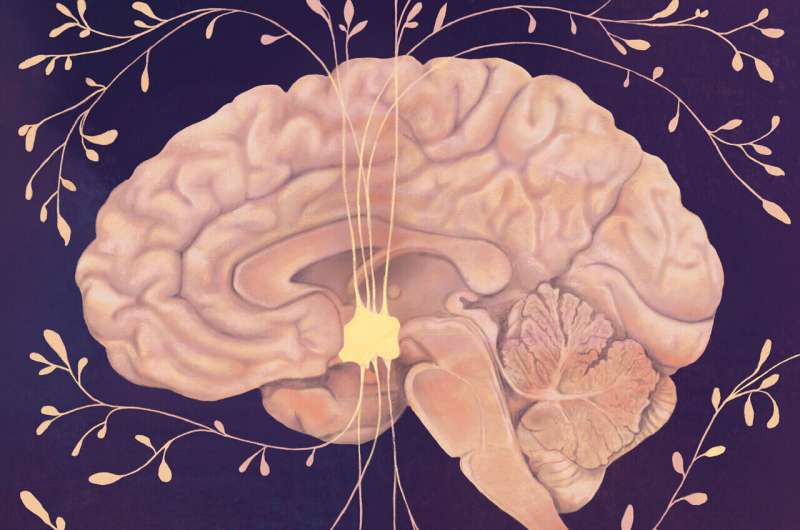Multiple review articles highlight the role of the hypothalamus in human existence


The journal Science has published a series of review articles regarding the outsized role that the hypothalamus plays in human behavior—regulating hunger pangs, sleep cycles and social interactions, the almond-sized brain structure located between the pituitary gland and the thalamus on top of the brain stem has been found to play the role of master switchboard for a wide variety of brain activities.
But because it is not considered to be part of higher functioning in the brain, it has not received as much attention as other areas, as two editors at Science, Mattia Maroso and Peter Stern, point out in an introduction to the four-part series.
The first of the reviews, by Harmony Fong, Jing Zhengand and Deborah Kurrasch, with the University of Calgary, provides an overview of the hypothalamus and the large number of bodily processes that it influences. The researchers also outline what is known about the structure of the region and that we are learning much more about the hypothalamus via new tools under development; for instance, single-cell RNA sequencing can provide a better perspective on the role that individual cells play in brain regions. They also note that optogenetics is allowing brain scientists to use light to watch brain activity in real time in animals. And retrograde tracing, they add, allows for tracking neural connections.
The other three articles focus more specifically on the role the hypothalamus plays in brain functions—Garret Stuber, with the University of Washington, reviews work in progress to better understand neural circuitry involved in driving the regulation of ventral tegmental area dopamine neurons as a means to satisfy motivational demands.
And Long Mei, Takuya Osakada and Dayu Lin, with Langone Medical Center, look at the reproductive behavior control column and the role in is believed to play in behaviors such as aggression, sexual activity and how to parent offspring. They also suggest that, together with the brainstem, it functions as a dual-control system that plays a major role in real-time social activity.
And finally, Antoine Adamantidis and Luis de Lecea with Inselspital University Hospital Bern and Stanford University, respectively, give an overview of what is known about the role that the hypothalamus plays in the sleep cycle and the stages of sleep itself. They also discuss the possible ways that the brain region handles conflicting information, such as a person’s desire to stay awake despite their sleep cycle insisting it is time to sleep.
Maroso and Stern conclude their introduction to the series by noting that despite its small size and seemingly mundane role in brain function, the hypothalamus plays a large role in human behavior and deserves more focused research.
More information:
Mattia Maroso et al, Small and mighty: The hypothalamus, Science (2023). DOI: 10.1126/science.adl3437
Harmony Fong et al, The structural and functional complexity of the integrative hypothalamus, Science (2023). DOI: 10.1126/science.adh8488
Garret D. Stuber, Neurocircuits for motivation, Science (2023). DOI: 10.1126/science.adh8287
Long Mei et al, Hypothalamic control of innate social behaviors, Science (2023). DOI: 10.1126/science.adh8489
Antoine R. Adamantidis et al, Sleep and the hypothalamus, Science (2023). DOI: 10.1126/science.adh8285
Journal information:
Science
Source: Read Full Article